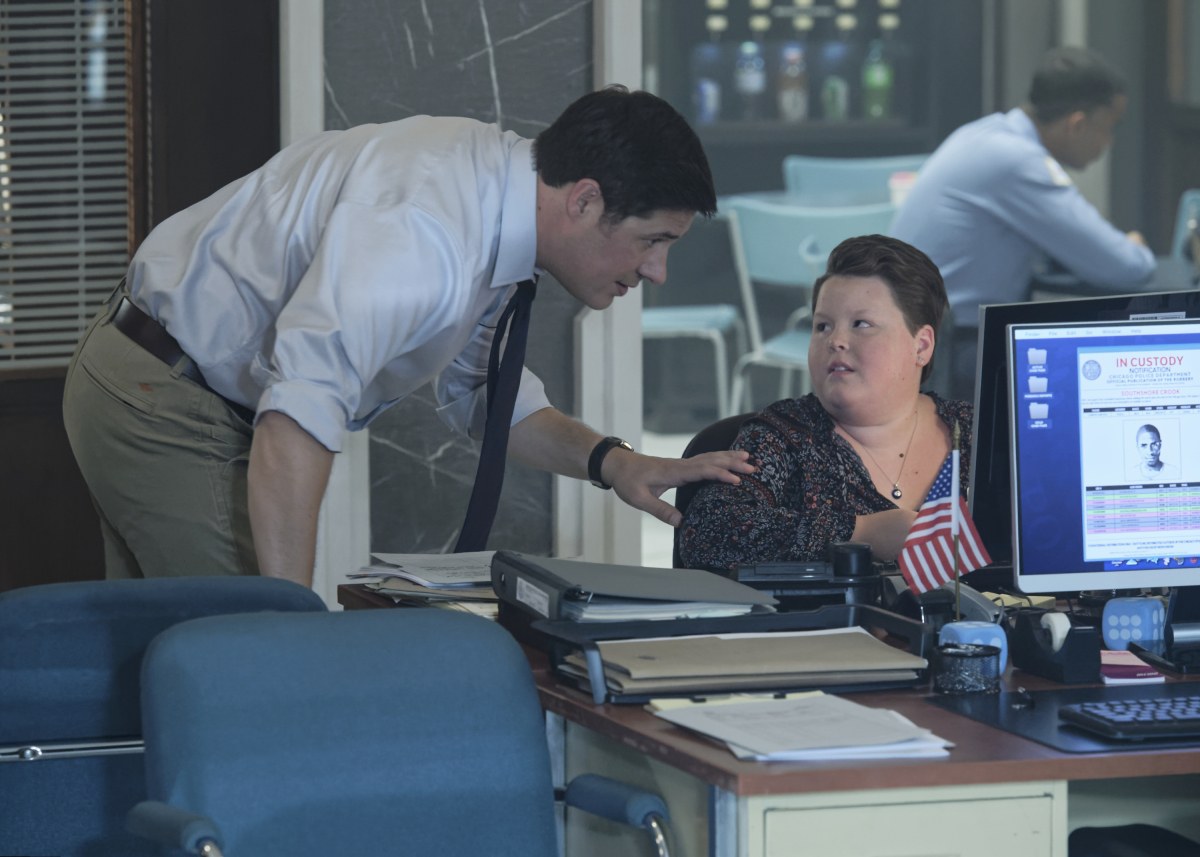The CW In the Dark Review: It's a Compelling Look at the Blind Experience

The CW‘s new series In the Dark hasn’t even premiered yet, but it’s already experienced a bit of controversy. Attendees at the annual Television Critics Association gathering this winter wanted to know why the network didn’t cast a blind actress for the leading role. (The series, if you’re unfamiliar, centers on a selfish, hard-drinking blind woman named Murphy who stumbles upon what she thinks is her friend’s dead body in an alley. When detectives show up and there’s no body to be found, she launches an investigation of her own.) Nuanced roles like this don’t come around often, and The CW’s decision to cast a sighted actress, Perry Mattfeld, came after auditioning several blind performers.
But according to the show’s blind consultant, Lorri Bernson, this was the right decision. She explained at the TCAs that a guide dog for a blind lead actress wouldn’t understand the concept of filming multiple TV scene takes. (Murphy’s dog plays an important role in her story.) “If I were to repeat what I just did, even three or four times, when I repeat it’s because [the dog] made an error,” she said, according to Deadline. “He would slowly break down because he did not know what he was doing wrong.” It’s worth nothing, however, that the show could’ve cast a blind actress and just not had a guide dog in the story.
Bernson wasn’t the only person on set making sure In the Dark accurately represented the blind experience. The CW also hired a blind writer, Ryan McKnight, and a blind actress, Calle Walton, to play one of Murphy’s friends, Chloe (who doesn’t have a guide dog when we first meet her). “I’d say it’s fairly accurate,” Walton tells Glamour about the show’s depictions. “They tried really hard to stay as accurate as possible. I think they did really well.”
Calle Walton on In the Dark.
The CW
One thing In the Dark does get right is that the blind characters are completely in control. There’s a murder mystery at the center of it, but the real thrill is watching Murphy live such an imperfect, independent life. She goes out; she smokes cigarettes; she has sex—these are things we rarely see blind characters do on screen. Think about Blake Lively in All I See Is You: Her character is completely dependent on her partner until she gets her vision back. Murphy doesn’t need anyone, vision or not.
Chloe is a teenager, but she exudes the same kind of agency: She fights with her dad and goes to public school. When she gets her period for the first time, she’s embarrassed and calls on cooler, older Murphy for help. She’s a regular teenager, and Murphy is a regular woman. They’re both so much more than their blindness, and Walton is excited about that.
“Blind people aren’t just useless lumps,” she says. “We can do anything anyone else can do. We just have to do it differently. Blind people can do anything that they set their hearts on.” Adds Mattfeld, “It’s a story about a woman who is so much more than what other people would like to say she is.”
That being said, Mattfeld did everything she could to make Murphy’s physicality as realistic as possible. She frequently consulted both Bernson and Walton throughout filming. “The story is loosely inspired by Lorri,” she says. “Before filming, I spent quite a bit of time with her in her house. I watched her get ready for bed. I watched her cook in her kitchen. I learned how to text using her audio settings. I watched her use her guide dog. Obviously, that part of Murphy was a challenge enough for me, and I recognize not only did I have a responsibility but how much I had to learn.”
